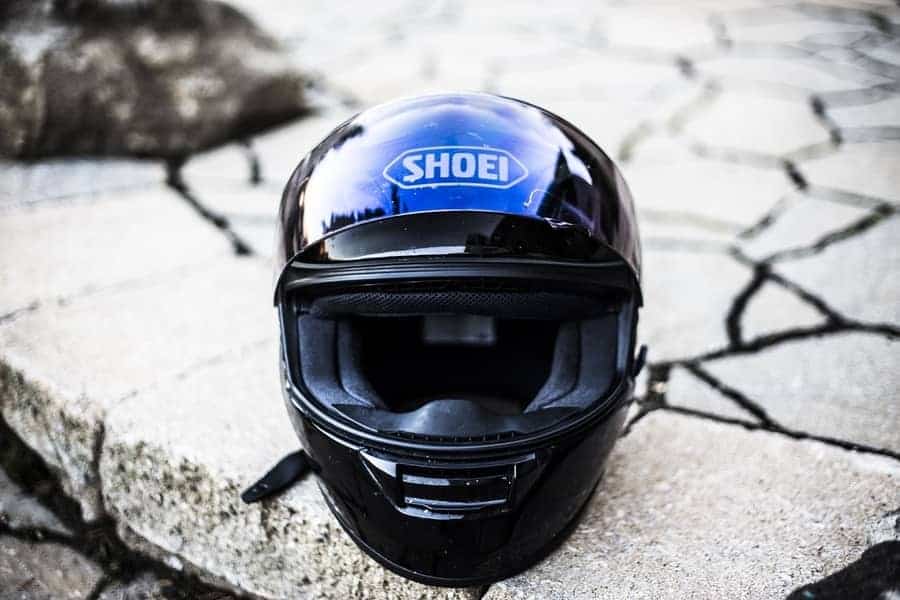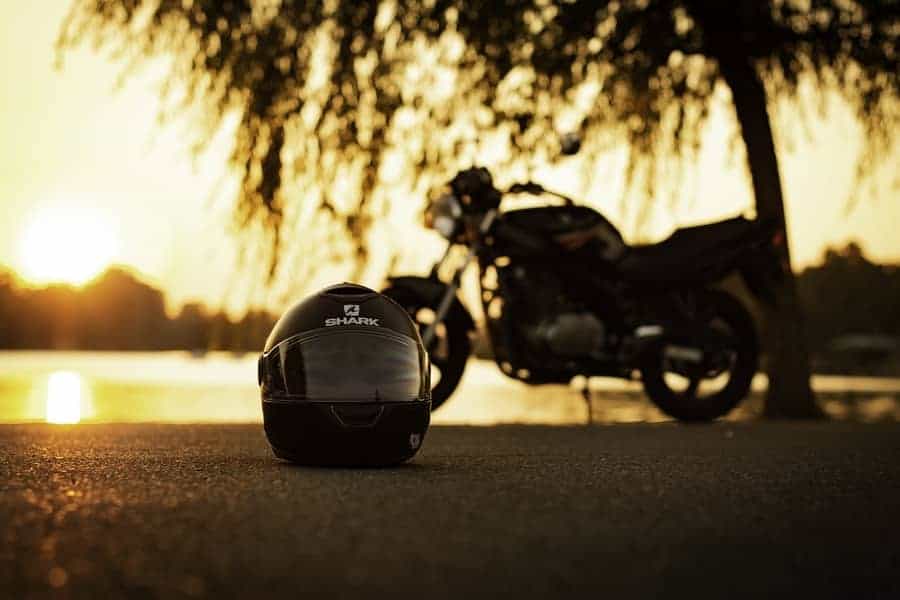Motorcycle gear can be pretty expensive, especially when you have to start from scratch. Some people decide to buy some second-hand motorcycle safety gear, to save their budget. That’s fine for me. But please be aware of the dangers of a second hand used motorcycle helmet. Do NOT buy your helmet second hand.
Besides the hygiene aspect, there is the safety aspect. Buying a second-hand motorcycle helmet is a huge safety hazard. I’ll give you 8 reasons why not to buy a second-hand motorcycle helmet that’s been used.
1. Helmets expire after a couple of years
A lot of people don’t know this, but helmets have an expire date. Some types last longer than others (depends on the used materials), but they all expire within a few years.
There is no way to know how old a helmet is when you buy it second hand. Even a helmet that’s never been used can go bad on the shelf because the materials slowly wear out and lose their capability to absorb a shock on a crash.
Helmets should have a sticker with the date of production, it can be found under the inner lining. I once bought a ‘new’ helmet in a motorcycle store. When I got home, I saw it was already 3 years old! It was just sitting on the shelf in the shop. I went back to the store and immediately demanded (and got) a new helmet.
How long do motorcycle helmets last
There is a short and a long answer to this question. Generally speaking, you could say that helmets last about 5 years. The material gets less effective and will have less shock absorption capabilities over time.
Want to look more into detail? In that case, you’ll have to check out what material your helmet is made of:
- A polycarbonate helmet lasts an average of 4 years
- A composite helmet lasts an average of 6 to 7 years
What really wears out a motorcycle helmet
So motorcycle helmets wear down over time and lose some of their effectiveness. However, usage is a big factor! An unused helmet will slowly deteriorate on its own over time, but there are other factors that come into play. These factors are the amount of use, maintenance and build quality.
These factors have an effect on the shock absorption capability of your helmet. A
What does this mean? This means that the

2. A helmet is useless after dropping it to the ground
For us motorcyclists, a helmet is what an airbag is to a car owner. It’s a one-time only thing. A helmet is disposable. You can only use them once for their main purpose, which is saving your head on impact.
The outer shell of the helmet often breaks or at least scratches. The inner shell will be compressed, absorbing the force. Once the inner shell is compressed, it is not able to absorb on impact again. That’s why a motorcycle helmet is a one-time thing only.
Did you know that this doesn’t only happen in a crash, but also when you drop your helmet? You should actually replace your helmet when you drop it from 4 feet or higher. The outer shell of your helmet doesn’t break (or even scratch), but the inner shell could have been damaged.
The problem is that you cannot see if the inner shell is compressed already. Only when you buy a new helmet, you can (almost) certainly say that the helmet never dropped.
3. Personal hygiene
The two reasons above are safety reasons not to buy a second-hand helmet. Another reason to not buy a used helmet is the hygiene matter.
I wouldn’t want to wear a helmet full of somebody else’s sweat, hairspray, and dander. It’s just not very hygiene. And yes, there are several ways to clean a motorcycle helmet. But this will never fully clean the helmet, it just takes the worst bits away.
Motorcycle gear is hot, especially on hot days (when a lot of people ride). Hot clothing equals sweating, equals a dirty helmet. It’s just a no-go for me.

4. The helmet shell can be broken
This reason is closely related to reason 2. Besides the helmet shell being compressed, it could also be broken! You can easily examine t
A broken shell means no proper shock absorption, which means you put your head at risk. Really, just don’t!
5. The interior should shape to your head
Every helmet should wrap perfectly around someone’s head. This ensures that the helmet stays in place, and will prevent slamming into the inner shell on a crash.
Every helmet has an interior, also known as inner lining, which will shape to your head over time. You’ll see that you helmet fits better and better over time due to this.
A used helmet is shaped to somebody else’s head. Once it’s shaped, it cannot change itself to a new shape. This means the helmet fits the previous owner perfectly, but won’t fit you as a new owner. This means an increased risk of free space between your head and the helmet, reducing the effectiveness of the helmet.
This is another reason why not to buy a second-hand helmet!
6. The materials will wear out
Like said before; material in the helmet can wear out over time. There are several factors which speed up this process.
The sun is one of the biggest factors that come into play when we look at the outer shell. Stuff like UV radiation, rain,
Besides that, EPC is used for the inner shell of the helmet. This material will harden over time, making it less effective for shock absorption. Eventually, it will become hard all through, which means it won’t be able to absorb any impact at all.
Keep these things in mind when you buy a (used) helmet. A helmet that has been sitting in a shop at a

7. Choose a helmet that fits the shape of your head
This tip applies when you buy a used helmet, but also when you are looking for a new helmet!
Every helmet has its own shape, which means that not every helmet will fit your head perfectly. You can roughly sort them into three kinds of shapes. Make sure you find out what kind of shape your head has, in order to find the best helmet for you.
- Round oval helmets will fit wider heads. They are almost as wide as long, making it a more circular shape.
- Intermediate oval helmets are the “average” shape of a head. They are oval but not as narrow as the long oval helmets.
- Long oval helmets are meant for people with a skinny and long head from front to back.
Please take in mind that this has nothing to do with sizing! Every type of helmet (round oval, intermediate oval, and long oval) have their sizes. The categories above, are a matter of shape. The sizing is a matter of head size.
This means that a round oval head (wider head) can be a Small, and a long oval head could be an Extra Large. First find out what the shape of your head is, then find out what size you’ll need.
I can explain more about this on my blog, but you should actually go to a shop and try different kinds of helmets to find out for yourself.
Summary; lessons learned
I hope you learned one lesson whiles reading this article, which is “Do not buy used helmets!”. It’s just not worth it. You’ll save a dollar or 50, but you put your head at risk. You head is the control room to your body, you don’t want to mess with it. Just go to a good shop and find out which (new) helmet fits your head best. Drive safe!
